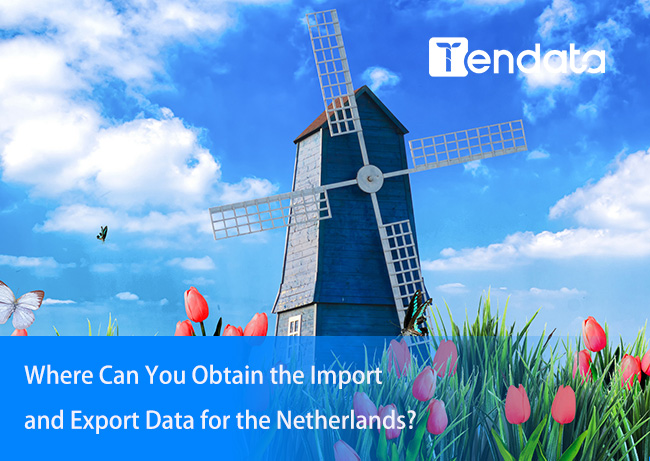 Export News
Export News
 24-04-2024
24-04-2024
In 2023, the Netherlands was the second-largest goods importer and exporter in the European Union, importing goods worth 780 billion euros, second only to Germany's total imports valued at 13,530 billion euros. In 2023, the Netherlands was a major trading partner for Belgium and Germany.

The Netherlands Imports a Large Volume of Products from Non-EU Countries
In 2023, the Netherlands' imports from non-EU countries (4580 billion euros) were almost as much as Germany's (4720 billion euros). Non-EU countries accounted for 59% of the Netherlands' total imports. Only Ireland imported more goods from outside the EU (61%). The Netherlands imported relatively more goods from China, while Ireland was more oriented towards the United States and the United Kingdom. In comparison, Germany imported relatively fewer goods from outside the EU (35%), while imports from other EU countries like the Netherlands were much higher. Overall, 39% of goods imported by the EU came from outside the EU.
The Netherlands is the EU's Second-Largest Goods Exporter
In terms of exports, the Netherlands (with an export value of 8,660 billion euros in 2023) ranks second in the EU, only behind Germany (with an export value of 15,620 billion euros). The Netherlands' exports are highly concentrated within the EU, with 70% flowing to other EU countries. More than two-thirds of the Netherlands' exports to the EU are re-exports. For example, compared to Germany's exports to China (6%) and the United States (10%), the Netherlands' exports to China (3%) and the United States (5%) are relatively lower. Germany exports 54% of its goods to EU countries, while in the entire EU, this proportion is 62%.
The Netherlands is the Largest Trading Partner of Germany and Belgium
To understand the total volume of goods trade, one can combine goods imports and exports. Each EU country has a primary trading partner. In 2023, the Netherlands was the largest trading partner for neighboring countries Germany and Belgium. However, this has not always been the case. For example, in 2003, the Netherlands was not the most important trading partner for any other EU country. Belgium had the most trade with Germany, and Germany had the most trade with France. The Netherlands' previous main trading partner has always been Germany. However, today, China is the Netherlands' main import partner. Germany's main export partner is now the United States.
Germany is the Most Important Trading Partner for Nearly Half (13) of the EU Member States. This is due to Germany's economic importance as an exporter and sales market, as well as its central location and land borders with eight other EU countries. Italy is the main trading partner for three EU countries (Malta, Croatia, and Greece).
>>>Click to Get FREE ACCESS TO EUROPEAN DATA<<<
In global trade, it is crucial to recognize the significance of customs data. When customs data is effectively aligned with business development, it greatly enhances the volume of global trade operations. Below, Tendata will elucidate three key applications of import and export data:
1. Market Analysis
Analyzing market trends and frontiers involves assessing market demands across different regions and juxtaposing product prices. This facilitates the selection of target markets with high profitability and substantial demand. Simultaneously, by querying customs data, one can gain insights into product market distribution and changing trends, enabling timely adjustments to marketing strategies.
Tendata iTrader provides access to customs data from over 90 countries (>>>Click to GET FREE ACCESS TO CUSTOMS DATA from 80+ Countries<<<), along with business data from 198 countries and over 10 billion trade records. Through multidimensional aggregation and analysis of global market information such as buyers, suppliers, countries of origin, trading cycles, and trade ports, Tendata deeply dissects target markets. This enables the formulation of guiding marketing strategies, product strategies, and competitive strategies. It optimizes production and logistics systems, achieving precision targeting. (>>>Click to GET SAMPLE DATA ONLINE<<<)

2. Customer Development
Customer development is a widely used function that involves finding potential high-quality customers through product keywords, HS codes, or filtering based on transaction frequency, scale, traded products, and trade partners. Coupled with contact information, this approach facilitates direct engagement with buyers.
Tendata combines trade data from 218 countries, business data from 198 countries and regions, and internet data from 141 countries to create a comprehensive database. With instantaneous search results, global target customers are presented in 0.01 seconds (>>>Click to Apply for Free Trial Data<<<).

3. Customer Acquisition
Customer acquisition involves examining changes in customers' trade partners to understand whether they are engaging new suppliers and if there is a need to optimize current approaches. This can also be used to analyze peer-to-peer transactions and understand peer pricing. At times, data can reflect the customer situations of peers, aiding in customer acquisition.
Tendata's in-depth customer information assists in analyzing detailed buyer profiles and provides contact details for numerous high-level executives. This represents invaluable sales material (>>>Click to Apply for Free Trial Data<<<).
Today, Tendata from Shanghai shares the extended value brought by customs data. They eagerly anticipate gradually highlighting the value of utilizing these combinations of customs data in the subsequent data functionality services of global trade Link (>>>Click to Learn More<<<).
Category
Leave Message for Demo Request or Questions


 T-info
T-info T-discovery
T-discovery

 My
Tendata
My
Tendata Market Analysis
Market Analysis Customer
Development
Customer
Development Competitor
Monitoring
Competitor
Monitoring Customer Relationship
Customer Relationship





































































































































